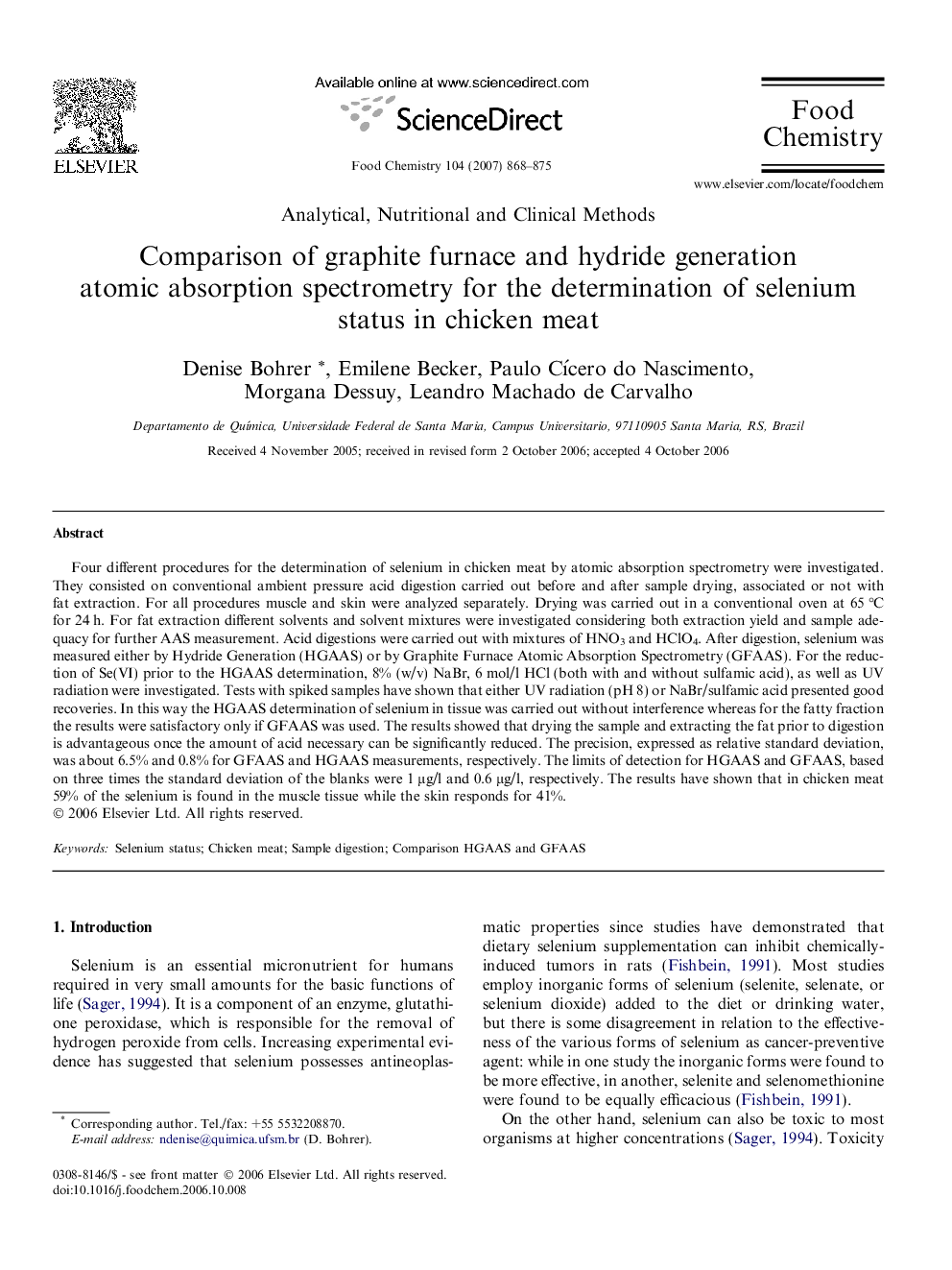| کد مقاله | کد نشریه | سال انتشار | مقاله انگلیسی | نسخه تمام متن |
|---|---|---|---|---|
| 1187817 | 963473 | 2007 | 8 صفحه PDF | دانلود رایگان |

Four different procedures for the determination of selenium in chicken meat by atomic absorption spectrometry were investigated. They consisted on conventional ambient pressure acid digestion carried out before and after sample drying, associated or not with fat extraction. For all procedures muscle and skin were analyzed separately. Drying was carried out in a conventional oven at 65 °C for 24 h. For fat extraction different solvents and solvent mixtures were investigated considering both extraction yield and sample adequacy for further AAS measurement. Acid digestions were carried out with mixtures of HNO3 and HClO4. After digestion, selenium was measured either by Hydride Generation (HGAAS) or by Graphite Furnace Atomic Absorption Spectrometry (GFAAS). For the reduction of Se(VI) prior to the HGAAS determination, 8% (w/v) NaBr, 6 mol/l HCl (both with and without sulfamic acid), as well as UV radiation were investigated. Tests with spiked samples have shown that either UV radiation (pH 8) or NaBr/sulfamic acid presented good recoveries. In this way the HGAAS determination of selenium in tissue was carried out without interference whereas for the fatty fraction the results were satisfactory only if GFAAS was used. The results showed that drying the sample and extracting the fat prior to digestion is advantageous once the amount of acid necessary can be significantly reduced. The precision, expressed as relative standard deviation, was about 6.5% and 0.8% for GFAAS and HGAAS measurements, respectively. The limits of detection for HGAAS and GFAAS, based on three times the standard deviation of the blanks were 1 μg/l and 0.6 μg/l, respectively. The results have shown that in chicken meat 59% of the selenium is found in the muscle tissue while the skin responds for 41%.
Journal: Food Chemistry - Volume 104, Issue 2, 2007, Pages 868–875